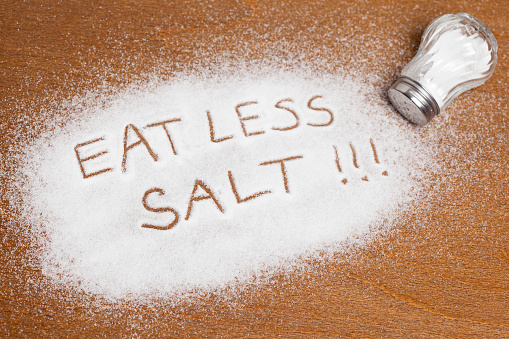 116/74—that was my blood pressure upon last check.
116/74—that was my blood pressure upon last check.
And I’ll tell you, it feels pretty good—especially since I got my blood pressure down to this healthy level by targeting just one culprit. But more on that in a moment…
First, let me back up and explain a little bit about blood pressure.
What Your Blood Pressure Measurement Means
When your systolic blood pressure (the top number in your measure) is 120 or below, you significantly reduce your chances of heart and kidney problems. If you have a high blood pressure measure (140 systolic or above)—even if you’re just over 120—bringing it down is highly recommended. Once you have it to 120 or below, you’ll be part of a group that experiences far lower rates of heart attacks, strokes, and death.
I’m not going to tell you to exercise and eat more vegetables. Everyone and their mother have been telling you that for decades; they aren’t the only things you can do. Instead, I’m going to tell you about the one major step I took to lower my blood pressure: I targeted my salt intake.
How Much Salt Are You Eating?: The Top Hidden Sources of Sodium
Salt intake makes a big impact on blood pressure, but you likely aren’t aware of how big. In fact, you likely aren’t even aware of how much salt you’re consuming.
Many Americans eat between nine and 12 grams of salt per day, while the American Heart Association recommends three to four grams.
You might be saying, “Hey, I rarely put salt on anything, so I have little to worry about.” Sure, that’s a good habit you’ve formed but you haven’t quite accomplished what I’m talking about yet.
Why’s that? Because it’s not adding a bit of table or sea salt to your meal once you’ve plated it that accounts for the massive sodium intake. It’s the amount added to processed foods you need to be aware of. And if you eat out a lot, most restaurant food is loaded with sodium.
In fact, while fast food is often viewed as the absolute worst form of nutrition and sit-down restaurants are seen as being slightly better for nutrition, a recent study suggests this perception is entirely wrong. Released in July, the study shows that sit-down restaurants actually add more salt and cholesterol to meals compared to fast food fare. The research showed eating fast food can add 297 mg of sodium to your daily diet, while a meal at a sit-down restaurant can add 412 mg!
So to help you get started on spotting where the hidden sodium is in your meals, here are a few examples of where sodium sneaks into packaged foods:
- Two slices of white bread contain 480 mg of sodium
- One large bran muffin contains 546 mg of sodium
- A half-cup of prepared pasta sauce contains 525 mg
- A bagel with cream cheese (2 Tbsp.) contains 694 mg
- Six ounces of frozen pre-packaged chicken breast contains 800 mg (some manufacturers even inject saline into the meat to make it juicier!)
Fight Back: Make These Changes to Limit Sodium Intake and Lower Blood Pressure
To fight back and lower your blood pressure, try limiting your salt intake with the following tips:
- One of the reasons why you consume more salt in a sit-down restaurant meal is because your server offers more bread, butter, dessert, and so on. Say “no” to any extras to eliminate potentially hundreds of milligrams of extra sodium.
- If you’re cooking a dish with a high sodium content like pasta sauce, try throwing a potato into the pot while cooking it and leave it for 15 minutes. The potato should absorb some of the excess salt. Of course, remove the potato before serving.
- Choose whole-grain bread and pasta options; they tend to be lower in sodium.
- Invite friends or family over for dinner, rather than meeting up at a restaurant.
- Cut down on processed foods by preparing larger batches of food from scratch and freezing portions for convenience.
- Not a great cook? Opt for simpler recipes, rather than buying prepared foods. For example, making a homemade pesto sauce by combining basil, garlic, olive oil, and lemon juice in a food processor is an easy and healthier alternative to canned sodium-heavy tomato-based sauces.
- Read all labels to better track your sodium intake.
Read Next
If you can take your salt intake down from eight grams per day to four grams using the above tips, you could see a drop in your systolic blood pressure by 6.7 points—and that can have a big impact on your long-term health!
Sources for Today’s Article:
Storrs, C., “How to Get Blood Pressure Down to 120,” CNN web site, September 18, 2015; http://www.cnn.com/2015/09/18/health/how-to-lower-blood-pressure-tips/index.html.
Sacks, F.M., et al., “Effects on Blood Pressure of Reduced Dietary Sodium and the Dietary Approaches to Stop Hypertension (DASH) Diet,” New England Journal of Medicine 2001; 344: 3–10, doi: 10.1056/NEJM200101043440101.
An, R., “Fast-food and full-service restaurant consumption and daily energy and nutrient intakes in US adults,” European Journal of Clinical Nutrition web site, July 1, 2015; http://www.nature.com/ejcn/journal/vaop/ncurrent/abs/ejcn2015104a.html.
